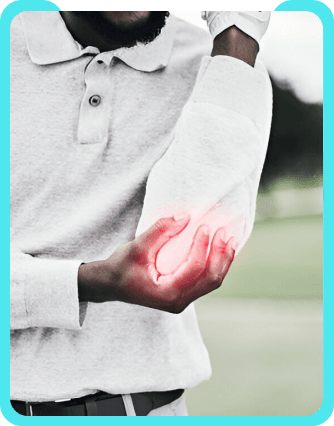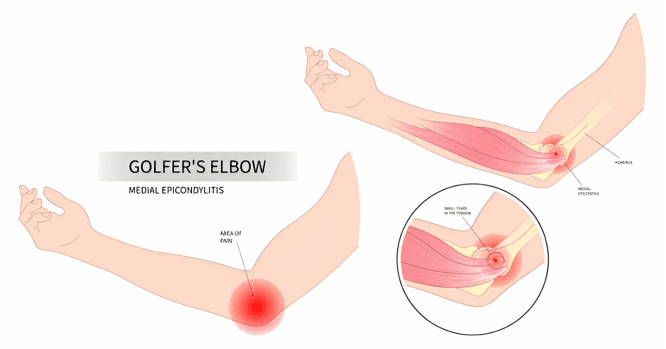
Golfer’s Elbow
What is Golf Elbow and How Can it be Treated?
An ailment known to affect professional athletes and active adults alike, golf elbow is one of the many conditions which we at Alleviate treat. Also known as medial epicondylitis, this ailment occurs when excessive strain or repetitive motions causes tendon connected to the medial epicondyle to become inflamed
These tendons run between the wrist and the medial epicondyle (the inner side of the elbow). This inflammation is worsened by wrist and arm motion and can lead to tenderness or pain due to motion. Treatment options for medial epicondylitis include rest, massage, steroid injection, and physical therapy. Surgery may be required in certain cases as well.
Alleviate, the premiere center for pain management in Bangalore, provides relief for thousands of patiennts. From minor pain to sports injuries and degenerative diseases, our team takes pride in providing treatment for whatever may be affecting our patients.
Treatment for Golfer’s Elbow

Video Spotlight
Blog
Surgery-Free Solutions
Expert Tips for Pain Management
Testimonials
Words From Our Patients
Alleviate is the ideal place for pain relief Dr.Wiquar Ahmed is a well experienced doctor with his guidance my golfers elbow treatment went well and i got rid of the pain... My physio Anjali is the best i say.. overall my experience was excellent
Had tennis Elbow & consulted Dr ,Feroze. Was pleased with the treatment & got immediate relief. Continued my rehabilitation excercises taught by Ms Sethu Lakshmi. After 2 weeks of regular exercises feeling really great & much relieved.
Found the Alleviate details over Google/Justdial and met Dr. Wiquar Ahmed. He explained very well about the treatment for my Shoulder (Elbow) pain. He suggested for 7 days Physiotherapy with medicine. So far it looks good and 80-90% of my pain has been reduced. Thanks a lot to Dr. Wiqur Ahamed Sir.





